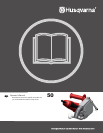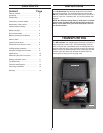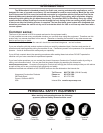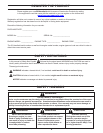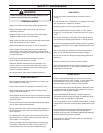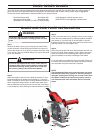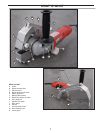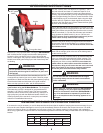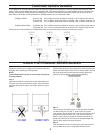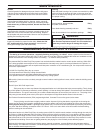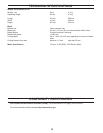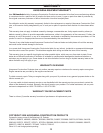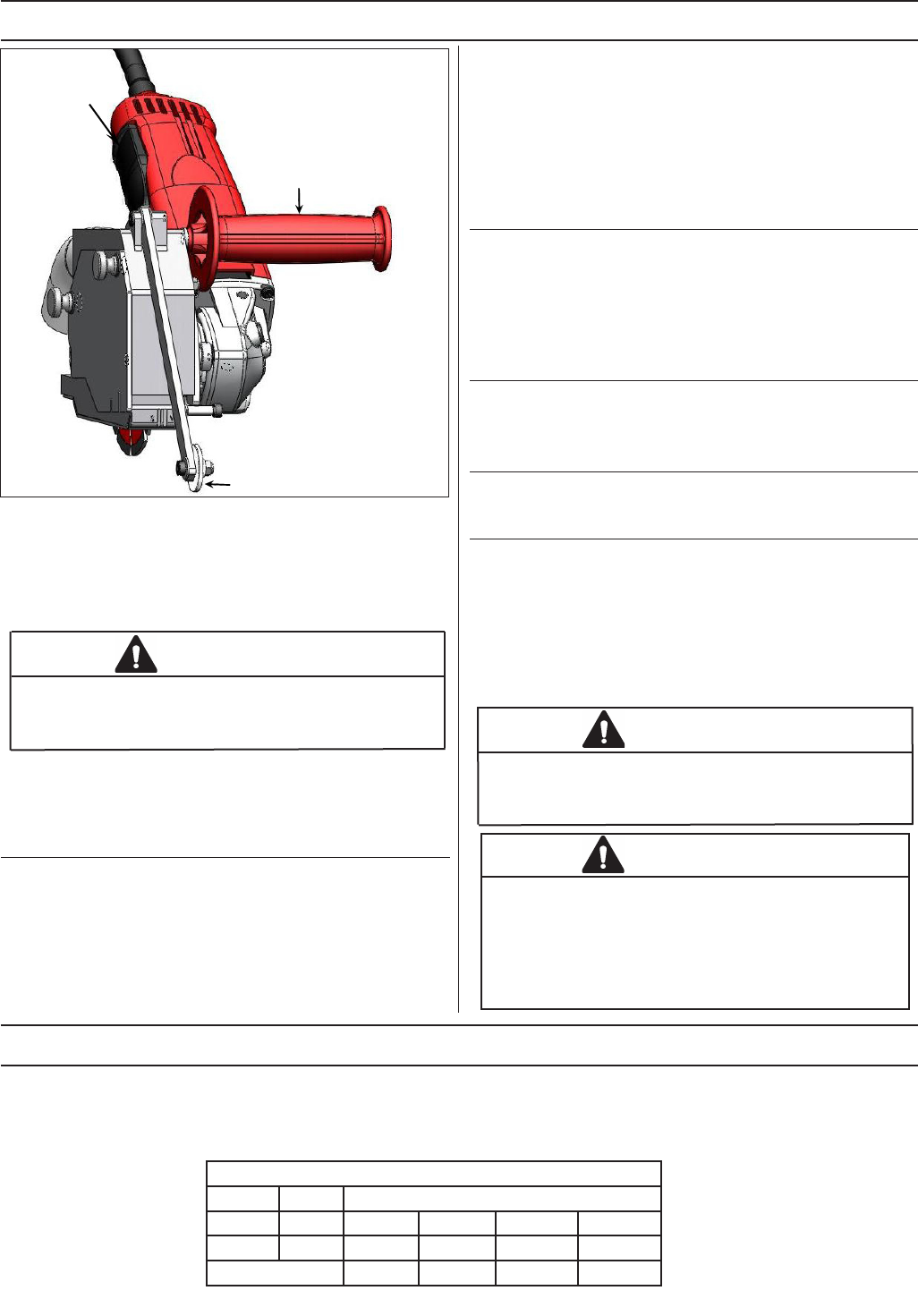
8
OPERATING INSTRUCTIONS
Experience is very important when running the 50 Handheld
saw. A skilled worker is highly recommended. Always do an
inspection of the saw before using it. Insure all guards are
secure, undamaged, and properly installed and that the spring
loaded lower blade guard swings open and closes freely with-
out binding.
WARNING
Do not leave the saw unattended while the engine
is running! Always secure the saw from movement
while unattended.
The saw is factory set to full depth-of-cut, typically 1” (25.4
mm) with a brand new blade. If a shallower depth of cut is
desired, such as for architectural scoring and decorative ap-
plication, adjust blade depth by turning the depth adjust thumb
screw (D) approximately one full turn counter-clockwise. Slide
the depth adjust arm (E) to the desired depth using the depth
indicator label (B). Tighten the depth adjust thumb screw (D)
by hand to lock the depth arm in place. Rotate the front guide
(A) down to the forward position.
WARNING
Do not operate the saw unless all guards, safety
equipment and the engine kill switch are in place and
operational!
ON-OFF paddle
switch
Handle
Front guide wheel
Position the power cord clear of the intended saw cut. Do
not wrap the cord around your arm or wrist. Check for proper
specication of blade and that the skid plate operates properly.
Check that the blade and skid plate are in good condition.
Make sure the work site is clean, well lit and hazard free.
WARNING
Before each use, carefully inspect the 50 Handheld
for any damage to any of its parts and components.
Under no circumstance should the 50 Handheld or
any of its attachments be operated if you nd dam-
age or are suspicious that something appears to be
damaged.
Line up the saw with the cut line using the “S” notch (F) on the
lower guard (N) and the triangle pointer at the rear of the lower
blade guard. Make sure the skid plate lies at on the concrete
with the rear wheel (J). Flip the lock-off button and simultane-
ously squeeze the paddle switch (L) to turn “ON” the saw
NOTE: Pressure must be maintained continuously on the
paddle switch to keep electric motor running.
Rotate the saw down slowly to plunge and lower the blade in
the concrete. Push the saw forward to cut, keeping the front
guide wheel on the cut line. Do not force the saw; let the dia-
mond blade to work.
When approaching a wall, raise the front guide and use the “S”
notch and the triangle guide at the rear of the blade guard to
cut the last few inches.
Husqvarna Soff-Cut recommends the use of a vacuum
system when using the 50 Handheld saw. The integrated
dust extraction port (M) is designed for easy attachment of
standard 1 1/2 (38 mm) vacuum hose. The vacuum system
allows the saw to function at its peak efciency, making for a
high quality saw joint with the additional benet of little or no
cleanup required (of the saw and/ or saw joints) and marked
reduction in breathable airborne dust.
GENERATORS AND EXTENSION CORDS
If an extension cord is necessary, a cord of adequate size conductors that is capable of carrying the current necessary for your
tool must be used. Replace damaged or worn out cords immediately. Refer to the chart for the correct size to use. If in doubt,
use the next heavier gauge. An undersized cord will cause a drop in line voltage, resulting in loss of power and overheating.
When using a generator, Husqvarna Soff-Cut recommends a generator with minimum rating of 2800 Watts and a 20 Amps circuit
breaker.
WIRE GAUGE CHART A.W.G.
Volts Amps Cord Length in Feet (Meter)
120 13A 25(7.62) 50(15.2) 100(30.5) 150(45.7)
220-240 6.5A 50(15.2) 100(30.5) 200(60.9) 300(91.4)
Minimum Gauge 16AWG 12AWG 12AWG 8AWG
Note: The smaller the gauge number, the heavier the cord.
At the end of the cut, rotate the saw up to raise the blade out
of the cut, without lifting the skid plate off the concrete. The
skid plate must remain at on the concrete until the blade is
completely out of the concrete. NOTE: Do not release the
paddle switch or switch off the saw while the blade is in
the concrete; doing so will cause the saw cut to ravel and
spall. Do not walk on the joints or transport equipment
across the joints until the concrete fully hardens.



